There is no accounting for tastes, and mine tend towards plants that like me....and crucifers are easily grown from seed, easily accommodated, and I love their brash yellows, pinks and purples (and of course whites)...a few that will be blooming in a few months (and I will be too preoccupied to talk about then) are posted below: The first is Coluteocarpus vesicarius, from Turkey, a plant that seems to be of interest only to plant nerds. But I find it charming. I keep forgetting to photograph the very showy bubble like seed pods that come out in early spring.
The second is a mystery draba that is truly amazing: two plants obtained as D. dedeana don't seem to look at all like the plants I have grown at other times as dedeana. Any hint on what they might be would be much appreciated. They are among the most easily accommodated and MASSIVE drabas in my garden, approaching 8" across and blooming from March to May. I believe they have finally set viable seed, which I have shared around and to the exchange.
Finally, the last is plain old Draba polytricha, which is near the top of my all time faves. I probably have over 30 scattered around my rock garden--and that's probably not enough (I rescued a flat of 32 that was going to be dumped by an eminent rare plant nursery: that's how I know how many I have!)...
Comments
Re: Some less frequently seen crucifers...
Thanks, Rick! I guess I knew it was a sympathetic audience...
Three more crucifers: the first is Ptilotrichum spinosum 'Purpureum' (occasionally still called Alyssum!)--that amazing spiny shrub from Spain and Morocco: I am amazed I so rarely see this in Gardens. I would never want to ve without it. Very accommodating.
The second is Aubrieta gracilis--the tiniest of Aubrietas and the best by far. From Greece: rosettes barely an inch across and this amazing flowering. It has made a massive mat in my rock garden and I hate to but have to peel off chunks of it each year. Again, rarely in other's gardens (although I'm always pawning it off on people)...
And third is the supposedly "true" Erysimum kotschyanum, grown from seed collected in Turkey. It is very compact and pleasant. I can never have enough wall flowers...
Re: Some less frequently seen crucifers...
I thought Coluteocarpus vesicaria rang a bell... I received it in my NARGS seed order!
I have it slated for 70F germination. Hope that's right. I won't be planting it for another month yet.
Re: Some less frequently seen crucifers...
An excellent thread Panayoti! Regarding Coluteocarpus vesicaria, I grew this many years ago, and gave away seedlings to local NARGS Chapter members... it is so rewarding to see plants perpetuated through the years, if not decades, by sharing those plants at local chapter meetings and seedling sales. My last encounter with this plant is in Peter George's excellent rock garden, spring 2010. The photo I post shows the plant as the bladder-like pods start to swell in early May, they get much larger and showy, the appeal of this rather rare and unusual crucifer, yet one that is easy to grow.
Ptilotrichum spinosum 'Roseum' harks back to my childhood days of gardening, when as a pre-teen I discovered rock gardening and started growing the usual things I could find at nurseries, dwarf pinks (Dianthus species and hybrids), carpeting Phlox subulata cultivars, and the hugely popular Basket of Gold in several varieties (Alyssum saxatile, later Aurina saxatilis), So it seemed an incredible novelty among yellow Alyssum to find a pink one advertised as Alyssum spinosum 'Roseum'. It is indeed Ptilotrichum, an ally of Alyssum, a genus that should be more widely grown, one which I must admit is absent from my garden; have to do something about that. Here is a picture in Peter George's garden once again, a young plant just budded and ready to flower.
Note: I have labeled the image as Ptilotrichum spinosum 'Roseum'; Peter please let me know if it came under a different name.
Re: Some less frequently seen crucifers...
Here's Ptilotrichum spinosum 'Roseum' in full bloom in a trough:
I showed photos of it last summer already, but this one fits the bill of a "less frequently seen" crucifer - Cheiranthus roseus, a very tiny monocarp from high elevations in China. It is fragrant, as one would expect.
Re: Some less frequently seen crucifers...
Here's Ptilotrichum spinosum 'Roseum' in full bloom in a trough:
I showed photos of it last summer already, but this one fits the bill of a "less frequently seen" crucifer - Cheiranthus roseus, a very tiny monocarp from high elevations in China. It is fragrant, as one would expect.
Your Ptilotrichum spinosum 'Roseum' is gorgeous, such a rich pink... it is the "pink Alyssum". Good to see a photo of it close hand and in full flower!
Re: Some less frequently seen crucifers...
And a couple of native alpine crucifers... certainly not ones that most of us get to see often. Not the showiest, though, either...
Arabis lyallii:
http://plants.usda.gov/java/profile?symbol=ARLY
Arabis lemmonii:
http://plants.usda.gov/java/profile?symbol=ARLE
Re: Some less frequently seen crucifers...
First off, Mark: sorry for my renaming the Ptilotrichum (if I have...it would take some spadework to find the proper name--and likely one would find there may not even be one): I am prone to paranomasia. It just looks purpler to me than rose. And as for YOU, Lori, you never cease to amaze me with all the goodies you come up with. That Cheiranthus is simply too cute! And fragrant to boot! I love purple crucifers (especially fragrant ones): a perfect Victorian nosegay. And I have a fondness for matty things like your lemmonii: I wouldn't mind that in my garden at all! I don't think every plant has to be smothered with flowers to be beautiful. I like the more graceful, willowy ones too.
But what is that blue mass in Peter George's garden? Next to the wonderful podded Coluteocarpus, Mark? That electric blue! He is quite the gardener. We are excited to lure him to Denver next September. I have a hunch he will really dazzle our local yokels (who think they grow everything)...
Re: Some less frequently seen crucifers...
Cheiranthus roseus - Gosh, Lori, that's the whole plant?
No wonder it is monocarpic!
Re: Some less frequently seen crucifers...
Panayoti, nothing to be sorry about; the name 'Purpureum' for a cultivar of Ptilotrichum spinosum does indeed exist, I've only known the plant under the 'Roseum' name. Checking the Bernard Harkness "The Seedlist Handbook", Third Edition 1980, (remember this "bible" of its day?) I still have two editions that are terribly worn and soiled from pawing through it coming in direct from the garden to look up names), it lists three cultivars;
'Coccineum' - reddish fls
'Purpureum' - purplish fls,
'Roseum' - rare pink form
The RHS Plant Finder online site only comes up with the species, and 'Roseum'.
http://apps.rhs.org.uk/rhsplantfinder/
Found a couple stunning photos of Ptilotrichum spinosum 'Purpureum'
http://commons.wikimedia.org/wiki/File:Ptilotrichum_spinosum_%27Purpureu...
http://commons.wikimedia.org/wiki/File:Ptilotrichum_spinosum_%27Purpureu...
But could these actually be Ptilotrichum purpureum? It's an accepted species, or is there truly a named color form of P. spinosum. Then I wonder about the 'Coccineum' cultivar, does it exist. Found at least one Danish web site where it is listed:
http://www.sverrelunde.com/Planteliste.htm
Ptilotrichum spinosum 'Roseum' available on the Siskiyou Rare Plant Nursery site, and many other nurseries:
http://siskiyourareplantnursery.com/ptilotrichumspinosumroseum.aspx
And last but not least, searching through Tropicos & The PLant List, I see that some Ptilotrichum are now Hormathophylla, and P. spinosum is listed as Hormathophylla spinosa Kupfer :rolleyes:
Re: Some less frequently seen crucifers...
Lori, the Arabis lemmonii has really attractive foliage and an almost shrubby look to it, I'd grow that one in a minute. I see from the USDA site there are 4 varieties.
Found more information the web site of The Burke Museum of natural History (University of Washington), with photos of Arabis lemmonii var. paddoensis which has deeper red-pink flowers, looking very attractive.
http://biology.burke.washington.edu/herbarium/imagecollection.php?Genus=...
Re: Some less frequently seen crucifers...
Quite a range of plants I would love to grow! But I fear they do not tolerate my climate at home :'( (or the mainly woodland biotope . . .)
Re: Some less frequently seen crucifers...
I like crucifers a lot--every plant in this thread is a winner! Lori, very cool to see the natives, the small number of natives I have seen (and not been able to name up till now with incomplete books) have all been white/cream..
Re: Some less frequently seen crucifers...
Thanks, Cohan. Here's one I forgot (that I can actually identify, that is ;D)... not uncommon in alpine screes here but it doesn't seem to be much in cultivation. Smelowskia calycina is attractive for its gray, pubescent leaves, even when not in flower.
It's sometimes affected by rust, as you can see from the distorted flowers in this photo:
There is a multitude of other tiny, native Brassicacaea in the mountains, Draba spp., I think... apparently, to figure out what the heck they are, I will have to take my hand lens and study whether the minute hairs on the leaves are simple, cruciform, stellate, lacking, or...... :rolleyes:
Re: Some less frequently seen crucifers...
I don't think I've seen this one in person--all those I recall had simple leaves-or at least not this divided...
Here are a couple of shots from near the Columbia Icefield tourist stop off of the Icefields Parkway between Banff and Jasper, from last June 26;
This is the album with these plants, and some willows:
https://picasaweb.google.com/cactuscactus/AlbertaRockyMountainsJune26201...
(The day as a whole was something like 16 albums-- I like to make each site separate, and keep album size modest for slow internet connections!)
The first I'm sure must be a fairly well known, common plant, I just haven't yet looked in the right places to know what! There were individuals with longer and shorter leaves, but I'm pretty sure these are all the same thing, just varying with age and exposure, and maybe just innate variation besides!
The next I missed full flowering of, but it looked like it had been pink/purple, and had really nice leaves; just today seeing Lori's earlier pics, I'm wondering if this could be an Arabis? Unlike the first, which was very common, I think I only saw the one plant of this...
Re: Some less frequently seen crucifers...
Another plant, from earlier that same day, alongside Abraham Lake, a much lower elevation, but a very exposed site... growing among grasses and numerous other forbs, including several nice legumes and composites..
https://picasaweb.google.com/cactuscactus/AlbertaRockyMountainsJune262010C#
Re: Some less frequently seen crucifers...
I have to say that Smelowskia calycina really had the prettiest leaves!
Re: Some less frequently seen crucifers...
Here are a couple of shots from near the Columbia Icefield tourist stop off of the Icefields Parkway between Banff and Jasper, from last June 26;
This is the album with these plants, and some willows:
https://picasaweb.google.com/cactuscactus/AlbertaRockyMountainsJune26201...
(The day as a whole was something like 16 albums-- I like to make each site separate, and keep album size modest for slow internet connections!)The first I'm sure must be a fairly well known, common plant, I just haven't yet looked in the right places to know what! There were individuals with longer and shorter leaves, but I'm pretty sure these are all the same thing, just varying with age and exposure, and maybe just innate variation besides!
The next I missed full flowering of, but it looked like it had been pink/purple, and had really nice leaves; just today seeing Lori's earlier pics, I'm wondering if this could be an Arabis? Unlike the first, which was very common, I think I only saw the one plant of this...
Cohan, I would guess that both the white-flowered plant and the presumed pink-purple flowered plant are Arabis species. Interesting seeing the progression from young plants to very showy mature plants (looking at your Picasaweb gallery too). You have me intrigued with the 2nd Arabis, indeed with rather neat linear foliage, and for an Arabis, the fruiting stems not overly elongated... my guess is that it would be showy in flower.
Re: Some less frequently seen crucifers...
Thanks, Mark, If they could be Arabis, at least that gives me a genus to check in the Flora..
The first species was quite common at that site, so it was fun to see it at all stages, and also growing in various conditions; sheltering in mats of other species, right out on the side of the moraines by itself, etc..
The second one is funny-- I found that photo right after telling Lori I hadn't seen any pink flowered species ;D You can see a couple of the flowers at the end of the stem in the first shot, looks like just a couple of stems, not covered like the other plant, but still a really pretty species overall, more substantial looking leaves than many Brassicaceae..
I have a couple more to post once I get albums done..
Re: Some less frequently seen crucifers...
Thanks, Cohan. Here's one I forgot (that I can actually identify, that is ;D)... not uncommon in alpine screes here but it doesn't seem to be much in cultivation. Smelowskia calycina is attractive for its gray, pubescent leaves, even when not in flower.
I love Smelowskia calcynia! There is an area about 2 hours from our home where it grows in an alpine scree at 11,000'. I have collected the seed many times and although the seeds look viable when sown I have never had one germinate. I'd love to know what makes the seeds tick so I can grow this beauty. :)
Re: Some less frequently seen crucifers...
Interesting, J. If they are not common in cultivation (? - my guess anyway), that may be one of the reasons. I'll have to collect a few seeds and give it a try. What methods of germination have you tried with them?
Re: Some less frequently seen crucifers...
I would have tried the seed outdoors over the winter - but maybe you have ;)
Can anybody help with this unknown crucifer? (Difficult to take pictures today in rain and wind!)
Re: Some less frequently seen crucifers...
You're sure its not Tanacetum? ;)
Maybe a Zizia?
Re: Some less frequently seen crucifers...
You're sure its not Tanacetum? ;)
Maybe a Zizia?
I don't think Tanacetum, but I'd go with the possibility of Zizia. Everyone should grow a Zizia, just to have a perennial ZEE plant in the garden ;D
Re: Some less frequently seen crucifers...
Could you show a closeer view of the flowers, Trond?
Re: Some less frequently seen crucifers...
I apologise for the bad quality of the picture due to rain, wind and an unstable hand ;)
But I definitely told you it is a crusifer ;D
Here are a better picture although yellow and white flowers is hard to find or the autofocus. But you get a fly too completely free ;D ;D
Re: Some less frequently seen crucifers...
I'd agree that Zizias should be more grown, but Zizia it isn't - it's an umbellifer! Your plant looks familiar, but I can't place it...
Here's my Zizia aurea, in flower at the moment:
Re: Some less frequently seen crucifers...
Ha! You know I was reading and thinking crucifer and didn't once catch my mind slip into umbellifer...lol.. as little as I know about umbellifers, I know less about crucifers (see above! and I photographed some in the mountains today, still no clues...lol).. so I have no clues for Trond's plant...lol
Re: Some less frequently seen crucifers...
I've for some time wanted to grow one of the mega-brassicas, Megacarpaea polyandra, one of the most commonly wild gathered food plants in the Himalaya region. I had seed from one of the seed exchanges a couple of years ago and one plant has survived, but I haven't planted it in the open garden yet. I saw it on my visit to the Gøteborg botanics growing in a woodland setting (see below). I also have two plants of Megacarpaea delavayi and seed of another species from Kazakhstan which haven't germinated yet. Anyone have experience with these or can advise on their requirements?
The second picture is of a Megacarpaea giganteum (a bit out of place in the Wendelbo bulb garden).
Re: Some less frequently seen crucifers...
I've for some time wanted to grow one of the mega-brassicas, Megacarpaea polyandra, one of the most commonly wild gathered food plants in the Himalaya region. I had seed from one of the seed exchanges a couple of years ago and one plant has survived, but I haven't planted it in the open garden yet. I saw it on my visit to the Gøteborg botanics growing in a woodland setting (see below). I also have two plants of Megacarpaea delavayi and seed of another species from Kazakhstan which haven't germinated yet. Anyone have experience with these or can advise on their requirements?
The second picture is of a Megacarpaea giganteum (a bit out of place in the Wendelbo bulb garden).
interesting--what part is edible, leaves?
Re: Some less frequently seen crucifers...
Yes, young leaves/shoots, sometimes also the root.
Re: Some less frequently seen crucifers...
I would have tried the seed outdoors over the winter - but maybe you have ;)
Can anybody help with this unknown crucifer? (Difficult to take pictures today in rain and wind!)
HUGUENINIA tanacetifolia? came across it on a garden listing... looking at pictures (google, but not enlarged, my downfall) and couldn't figure out how it was different from Tanacetum--until I finally saw a mention that it was Brassicaceae...
Re: Some less frequently seen crucifers...
I would have tried the seed outdoors over the winter - but maybe you have ;)
Can anybody help with this unknown crucifer? (Difficult to take pictures today in rain and wind!)
HUGUENINIA tanacetifolia? came across it on a garden listing... looking at pictures (google, but not enlarged, my downfall) and couldn't figure out how it was different from Tanacetum--until I finally saw a mention that it was Brassicaceae...
I think you nailed it, Cohan! Thanks.
Re: Some less frequently seen crucifers...
Is it in your garden? Is it a desirable plant to grow?
Re: Some less frequently seen crucifers...
Is it in your garden? Is it a desirable plant to grow?
Yes, it is growing in my garden and I vaguely remember I bought a small plant many years ago. I think it is worth growing ;)
Re: Some less frequently seen crucifers...
Good to know.. It was on a garden list I was supposed to give some choices for possible seed from, and not a lot of info on this.... not that I had any problem finding way too many choices anyway...lol
Re: Some less frequently seen crucifers...
Here's a good one...
I got the seed as "Didymophysa vesicaria" but it was later identified at the SRGC forum as (probably) Braya linearis: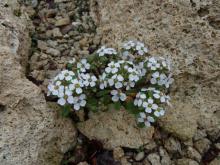
After blooming this year (it bloomed last year, as well), the plant has dried up like a little tumbleweed... I'm hoping the seeds it shed will grow next spring!
Re: Some less frequently seen crucifers...
Wonderful plant, Lori! Prettiest Braya in the world if you are right (they can be pretty homely)...
Your garden must be out of this world. You need to do an article for NARGS on it. Stephanie's article knocked the socks off everyone...but you seem to have even more plants than she does!
Re: Some less frequently seen crucifers...
Stephanie's article knocked the socks off everyone...but you seem to have even more plants than she does!
Oooh, thank you very much for the compliment, Panayoti.... but you have no idea how inaccurate that statement is!! ;D ;D If anyone from Calgary is reading this (or anyone who has visited Stephanie and Dave's garden), they know what I mean! Nobody has more plants than Stephanie! Her garden is an absolute wonder and truly world class!
Edit: Here, by the way, is the photo of Braya linearis that was cited by the kind person who tentatively ID'd it over at SRGC, and also a description:
http://photos.v-d-brink.eu/Flora-and-Fauna/Asia/nieuwChina-Yunnan/113843...
http://www.efloras.org/florataxon.aspx?flora_id=1&taxon_id=250095027

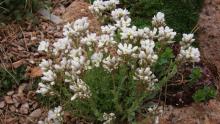
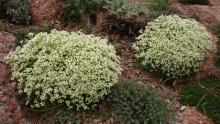

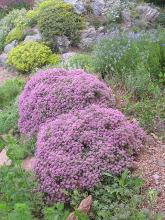
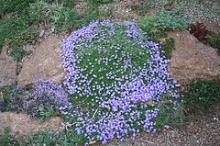
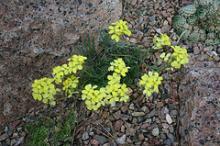

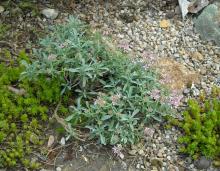
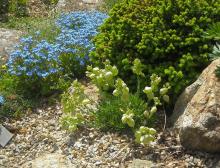
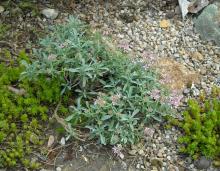

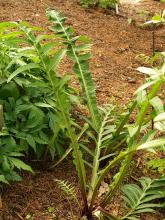
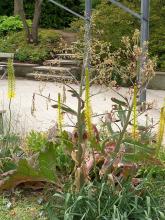
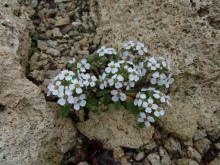
I think you could pretty much categorize us all as plant nerds.
Thanks for sharing these gems!